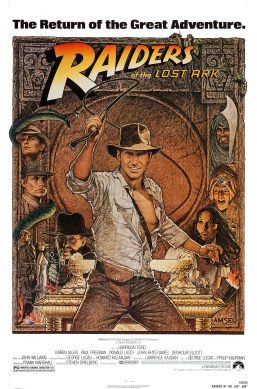
The very first Star Wars sequel, Episode V in the later-named Skywalker Saga, opens as with other main entries, with an opening crawl, detailing how the Rebel Alliance had to abandon their base on Yavin IV and seek another, in their case on the remote ice planet of Hoth, where Luke Skywalker, hero of the first film, is out on exploratory mission with his trust Tauntaun, only to get captured by a monstrous Wampa, from which he escapes thanks to the Force abilities acquired from his late Jedi mentor Ben Kenobi. Ben’s spirit orders him to the Dagobah system to find Yoda, “the Jedi Master who instructed me,” in which case when George Lucas ultimately expanded his franchise’s cinematic scope, he could have either cut Alec Guinness’s line short or added “when I was a youngling,” which the original Legends continuity would note.
Empire further expands upon the fledgling romance between Han Solo and Princess Leia, the latter describing him with the iconic line as a “stuck-up, half-witted, scruffy-looking nerf herder.” Han goes out and rescues Luke from the cold of Hoth, after which the Galactic Empire, with the help from probe droids, discovers the Rebel base, choosing to launch a ground assault with their cameloid walkers since their star destroyers came out of hyperspace too late, alerting the Rebellion to their presence and they got the opportunity to raise their energy shields. After my latest rewatch, it sort of makes the Gungan shield technology in
The Phantom Menace somewhat make sense, where the droid army could walk through their shields but not shoot through them.
The Rebels are eventually forced to flee again, although given that we don’t see a whole lot of star destroyers on the Imperial side, it begs the question of why the evacuating Rebel ships felt they had to keep near their enemies’ vessels when fleeing, when they could have very easily just flew elsewhere off the planet, again bringing to mind that many science-fiction writers, Lucas included (and this hole would notably recur in Episode I), often seem to forget that space is three-dimensional. On the imperial side, Sith Lord Darth Vader seems especially interested in finding Luke Skywalker given his role in destroying the First Death Star and agrees with his Sith Master the Emperor (in which case I think replacing the holo of Madam Monkeyface with Ian McDiarmid was a change for the better), that he should be turned to the Dark Side.
In the meanwhile, Han, Leia, Chewbacca, Threepio, and Artoo go on their own way, given Solo’s wish to rectify his dealings with Jabba the Hutt, and find themselves on the run from the Empire, in which case the trope of 2-D space does receive significant exception. Han and Leia’s romantic relationship begins to form, while Luke reaches Dagobah to begin his training with the diminutive Jedi Master Yoda, who initially feels Skywalker is too old to train, since instruction in the ways of the Force takes a lifetime, but reluctantly agrees with Ben’s Force ghost. Here arises the question of how much time elapses when Luke is training, along with Han and company eluding the Empire.
Han and his passengers find their way to Bespin where his partner in crime Lando Calrissian, and after a series of events, Luke senses his friends are in danger and wishes to help them, despite Yoda’s insistence that he continue his training. On a philosophical note, Yoda has the iconic line “Do, or do not; there is no try,” which
Revenge of the Sith would contradict with Obi-Wan’s statement that “only a Sith deals in absolutes.” Despite Yoda’s warning about Luke breaking from his instruction, he arguably does better than worse in the end, given the events in
Return of the Jedi that result, since he really didn’t jeopardize the Rebellion overall.
Luke’s visit to Bespin leads to his confrontation with Darth Vader, the end culminating in the legendary twist that’s been spoiled, imitated, and misquoted to death, which itself mirrored a major twist in Frank Herbert’s
Dune, later played straighter in
The Rise of Skywalker. In terms of tone, many have said
Empire is the darkest Star Wars film, but I think Episode III is
way darker, even if it has its narmy instances, since in Episode V Han and others really lighten the mood; even Vader has his moments. As in other films in the franchise, finally, John Williams’s score is notable (the music on Bespin being awesome, for example), and led me to watch the closing credits from start to finish.
All in all,
Empire Strikes Back is very much a classic of science-fiction and space opera, just as much so as
A New Hope, and is indeed “culturally, historically, or aesthetically significant”, but critics and audiences often seem to confuse that with “untouchable”, and in many cases more appear to love “the idea” of the film instead of the film as it actually is, given the various issues with the narrative and to an extent the dialogue. It is very much a bucket-list movie and one of the great cinematic tragedies, particularly within its genre, although like Episode IV still demonstrated George Lucas’s inexperience as a storyteller, and newcomer Lawrence Kasdan’s as a screenwriter.

